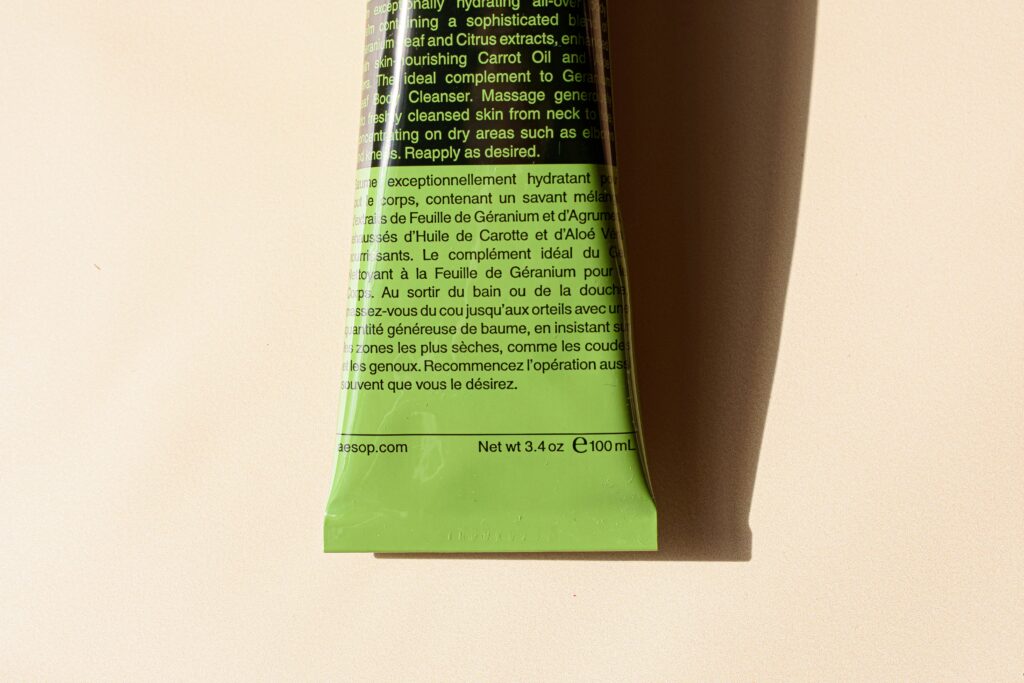Why Skincare Lingo Matters in 2026
Half the battle in skincare is knowing what you’re putting on your face. Product labels are more than marketing fluff they’re maps. When you understand ingredients, certifications, and even pH values, you make better choices and waste less money. That $85 serum isn’t magic; it’s active compounds and delivery systems. The label tells the story if you can read it.
But not all words carry equal weight. Brands throw around terms like “clean,” “natural,” and “hypoallergenic,” banking on trust rather than science. It’s on you to spot the difference. Is that ingredient dermatologist recommended or just trending on TikTok? Is “non toxic” a real category or just fear based marketing? Some terms are regulated. Most aren’t. A useful rule: if it sounds too perfect, look deeper.
The industry moves fast. New actives, biotech ingredients, updated regulations they all shape what’s worth buying now versus last year. If you want results and not just good packaging, you’ve got to stay current. Translate the label, challenge the buzzwords, and treat your skin like the living, changing thing it is.
Active Ingredients
In 2026, the word “active” in skincare still means one thing: ingredients that do the heavy lifting. These are the components actually backed by evidence to bring visible change to your skin whether that’s smoothing fine lines, fading dark spots, or calming redness. If you’re using serums or treatments and expecting results, you’re banking on actives.
Some of the usual suspects haven’t gone anywhere. Retinol remains a gold standard for cell turnover and anti aging, now often paired with gentler time release tech to make it friendlier to sensitive skin. Niacinamide, the multitasker, continues to balance oil production, fade discoloration, and support the skin barrier. Then there are peptides short chains of amino acids that tell your skin to repair, firm up, or chill out.
But layering actives is where most routines fall apart. You can’t just stack the strongest ingredients and hope for the best. The rule in 2026: smart layering or don’t bother. Start with water based serums (like niacinamide), then move to oil based serums or emulsions (like peptide blends), finishing with occlusive moisturizers. And don’t mix aggressive actives like retinol and chemical exfoliants unless you actually enjoy irritation. Stick to alternating nights for the heavy hitters, and always buffer with hydration.
Actives aren’t magic but used wisely, they’re the sharpest tools in the cabinet.
pH Balanced
Your skin has a natural, protective barrier called the acid mantle. Think of it as your face’s frontline defense thin, invisible, and slightly acidic. In 2026, more than ever, this pH layer matters because our skin is juggling pollution, product overload, and indoor AC like it’s a full time job. Wreck the acid mantle, and you open the door to dryness, irritation, and those annoying breakouts that show up uninvited.
The sweet spot for most skin? A pH between 4.5 and 5.5. That’s where your skin stays balanced not too oily, not too dry, and most importantly, not angry. Cleansers that hover in this range won’t strip your barrier. Toners should refresh without burning, and exfoliants, while more acidic by design, need to be used sparingly and strategically.
When your products are off pH say, a harsh cleanser sitting above pH 7 you’re hitting your skin with something closer to dish soap than self care. It might feel squeaky clean in the short term, but long term, it’s wrecking your moisture barrier and setting up inflammation.
The pH conversation isn’t just skincare jargon it’s about smarter formulations and better results. Want to learn how to keep your cleansing routine from sabotaging your skin? This is worth a read: The Dos and Don’ts of Facial Cleansing A Skincare Staple Explained.
Non Comedogenic

“Non comedogenic” is one of those terms that sounds reassuring especially if you deal with acne. But let’s clear something up: it doesn’t mean a product is guaranteed not to clog your pores. It just means the formula was designed to avoid doing so. The actual outcome? That still depends on your skin, your routine, and a few variables the label won’t mention.
For acne prone skin, relying purely on the term “non comedogenic” is risky. Everyone’s skin reacts differently, and what works for one face might trigger a breakout on another. A product could have the label and still include known irritants, heavy oils, or pore clogging waxes especially in makeup or moisturizers.
So what are the red flags? Watch for ingredients like isopropyl myristate, coconut oil (in leave on products), algae extract, and synthetic lanolins. They’re not evil in all cases, but if your skin is breakout prone, these can be triggers.
And here’s the kicker: the whole concept of comedogenicity is outdated. Most of the testing that led to those rating systems was based on rabbit ears not human skin. That tells you just how loose the standards are. Instead of trusting blanket terms, flip the bottle, read the ingredients, and get to know how your skin behaves.
Bottom line: “non comedogenic” is a starting point not a promise.
Occlusives, Emollients & Humectants
When it comes to hydration that actually lasts, there are three ingredient families you need to know: humectants, emollients, and occlusives. Each plays a different role, and together they’re the foundation of any solid moisture strategy.
Humectants are water magnets. They pull moisture into the skin and hold it there. Think of ingredients like glycerin, hyaluronic acid, and aloe vera. These are essential in dry climates or dehydrated skin types but need the support of other players to lock them in.
Emollients fill in the tiny cracks literally. They smooth the skin’s surface and make it feel supple. Ingredients like squalane, jojoba oil, and ceramides are gold for this. They work especially well for rough, flaky, or mature skin.
Occlusives come last. Their job is to seal everything in and stop water from evaporating. Think petrolatum, shea butter, or lanolin. If you’re in a harsh, windy, or cold environment, occlusives are your armor. But go light in humid areas they can feel heavy.
Your ideal hydration combo will depend on skin type and environment. Oily skin in Florida? Stick with humectants and light emollients. Dry skin in Colorado? Layer all three. Learning how to mix and match these isn’t just skincare smarts it’s survival.
Hypoallergenic
“Hypoallergenic” looks reassuring on a label, but here’s the truth: it’s more of a marketing term than a medically regulated standard. In most countries, companies can use it without testing or proving much. There’s no universal list of what qualifies a product as hypoallergenic, so it’s often just a guess or a promise based on minimal data.
Instead of relying on that word, check the ingredient list. Look for products labeled “fragrance free” (not just “unscented”), and avoid common irritants like essential oils, certain preservatives (like formaldehyde releasers), and drying alcohols. If you’re dealing with sensitive or reactive skin, less is more: short, transparent ingredient lists are a safer bet.
Still, the only reliable way to know how your skin will react? A patch test. Dab a small amount of new product behind your ear or on your inner forearm. Wait 24 to 72 hours longer if you’ve got extra sensitive skin. If there’s no redness, itching, or flaking, you’re probably good to go.
Bottom line: don’t trust a single word on the front of the bottle. Educate yourself, read the fine print, and test before that pretty new serum wrecks your week.
Cruelty Free vs. Vegan
Let’s get this straight: “cruelty free” means a product wasn’t tested on animals. “Vegan” means it has no ingredients derived from animals, like beeswax, lanolin, or collagen. They’re related, but not interchangeable. In 2026, both matter especially as consumers get sharper and expect brands to walk the talk, not just slap on feel good labels.
Why do both still count? Because a brand can be cruelty free but still use animal derived ingredients. Or it can be vegan, but pay third parties to test on animals where laws require it. If ethics are part of your skincare standard and for many, that’s non negotiable understanding the distinction is non optional.
Now to the darker side: greenwashing. Some brands toss around these terms like confetti, banking on vague claims and consumer confusion. If the label says “not tested on animals” but lacks accountability or specifics, question it. Transparency is the new marketing.
So what can you actually trust? Verified certifications. Look for logos from Leaping Bunny and Cruelty Free International these vets do their homework. For vegan claims, check for the Vegan Society seal or similar third party accreditation. Anyone can design a bunny icon or use the word “vegan” decoratively. Verified seals are earned, not designed in Canva overnight.
Final Notes
Skincare knowledge doesn’t have to feel like a second job. But if you want real results, you can’t ignore the terminology either. The sweet spot is staying informed without drowning in advice, trends, or jargon. Pick your go to sources and stick with them. That could mean subscribing to a few derm backed blogs, bookmarking ingredient databases, or following one or two science first creators, not twenty.
When in doubt, double check. If a term sounds flashy or vague like “derma infused” or “pH boosting” look it up before buying the hype. Ingredient names might seem intimidating, but most of what you need to know is out there, and explained in plain English if you know where to look.
Bottom line: What you put on your skin matters, but understanding why you’re putting it there matters more. Products only work if you know how (and when) to use them. Your best results start with education and that part is still in your hands.
